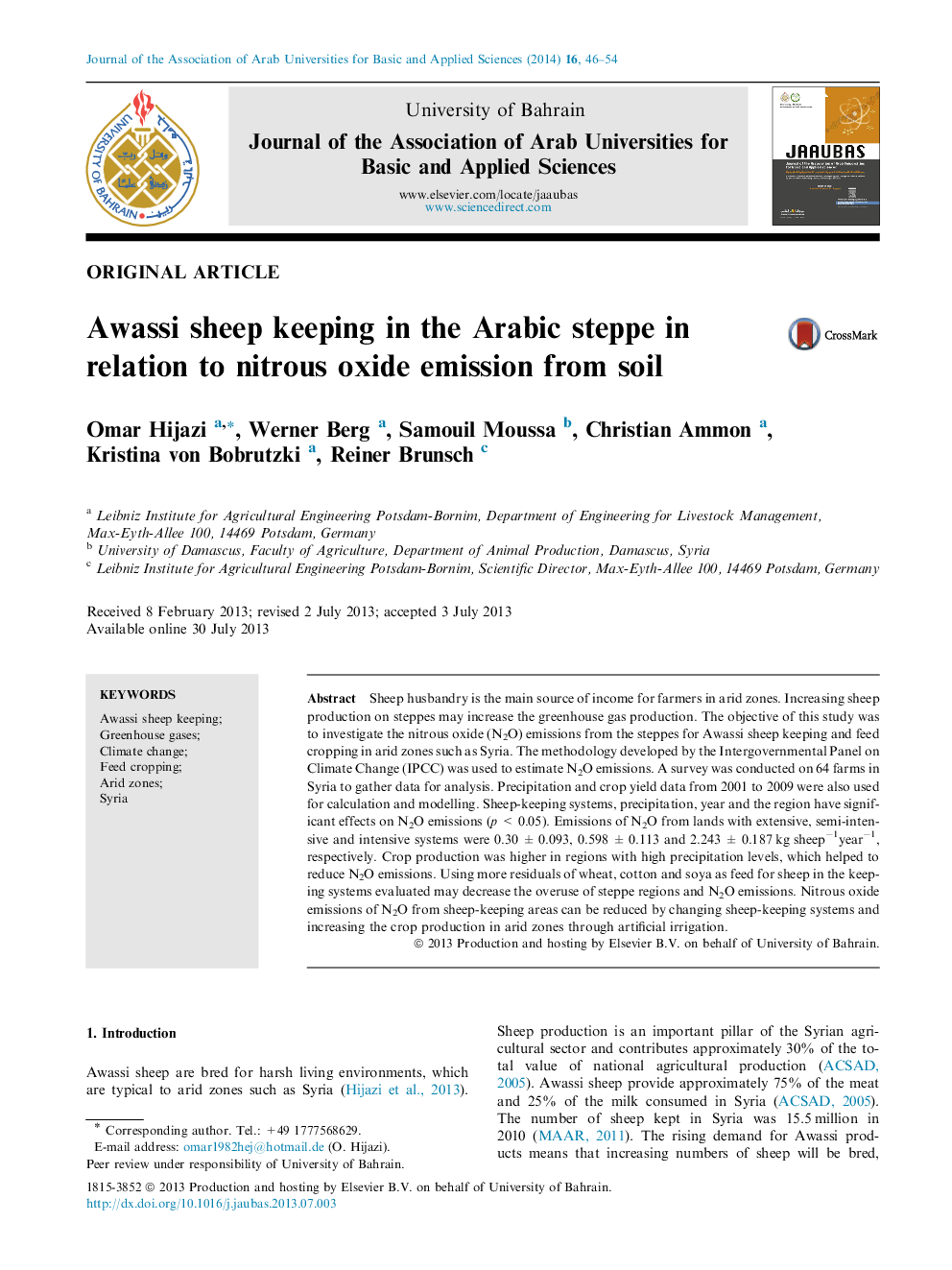| کد مقاله | کد نشریه | سال انتشار | مقاله انگلیسی | نسخه تمام متن |
|---|---|---|---|---|
| 1258927 | 1496521 | 2014 | 9 صفحه PDF | دانلود رایگان |

Sheep husbandry is the main source of income for farmers in arid zones. Increasing sheep production on steppes may increase the greenhouse gas production. The objective of this study was to investigate the nitrous oxide (N2O) emissions from the steppes for Awassi sheep keeping and feed cropping in arid zones such as Syria. The methodology developed by the Intergovernmental Panel on Climate Change (IPCC) was used to estimate N2O emissions. A survey was conducted on 64 farms in Syria to gather data for analysis. Precipitation and crop yield data from 2001 to 2009 were also used for calculation and modelling. Sheep-keeping systems, precipitation, year and the region have significant effects on N2O emissions (p < 0.05). Emissions of N2O from lands with extensive, semi-intensive and intensive systems were 0.30 ± 0.093, 0.598 ± 0.113 and 2.243 ± 0.187 kg sheep−1year−1, respectively. Crop production was higher in regions with high precipitation levels, which helped to reduce N2O emissions. Using more residuals of wheat, cotton and soya as feed for sheep in the keeping systems evaluated may decrease the overuse of steppe regions and N2O emissions. Nitrous oxide emissions of N2O from sheep-keeping areas can be reduced by changing sheep-keeping systems and increasing the crop production in arid zones through artificial irrigation.
Journal: Journal of the Association of Arab Universities for Basic and Applied Sciences - Volume 16, October 2014, Pages 46–54